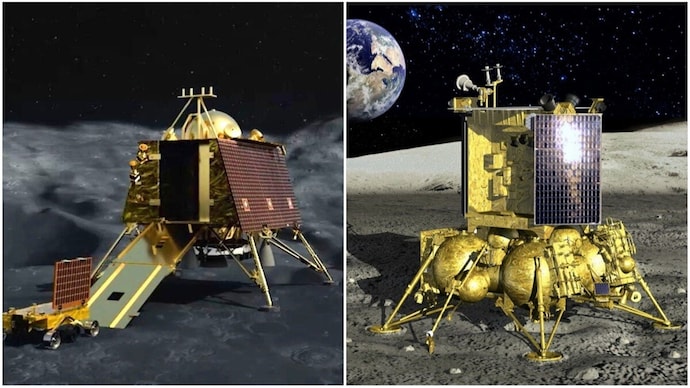
India, Russia rush to Moon's south pole: What secrets does it hold
Both India's Chandrayaan-3 and Russia's Luna-25 mission are planned to land on the southern polar region of the Moon. The unexplored region hides many secrets and its going to be a race against time to ensure a long lunar legacy.

In Short
- India's Chandrayaan-3 mission aims to demonstrate a safe landing
- The mission is seen as a stepping stone
- Russia's Luna-25 mission aims to study the composition of the lunar polar regolith
The lunar south pole has become the new frontier in space exploration, with India and Russia eyeing this unexplored region with their Chandrayaan-3 and Luna-25 missions.
This region of the moon is of particular interest due to its potential abundance of resources, including water, which was unambiguously detected by SOFIA in 2020.
The presence of water ice in permanently shadowed regions (PSRs) could be a game-changer for future explorers, providing vital resources for survival and potentially even rocket propellant.
A TREACHEROUS HOST
However, landing on the moon's south polar region is not without its challenges. The terrain is treacherous, with large craters stretching thousands of kilometers. The lighting conditions make it difficult to discern the ground from a descending vehicle, even with advanced sensors.
FOLLOW CHANDRAYAAN-3 LIVE UPDATES
Furthermore, the extreme cold, with temperatures dropping as low as -230 degrees Celsius, poses a significant challenge to the functioning of electronic instruments.
India's Chandrayaan-3 mission aims to demonstrate a safe landing on the lunar surface, a feat that previous missions have failed to achieve in this region. Beyond this, the mission will conduct in-situ science experiments using the small, 26-kilogram Pragyan rover.
The mission is seen as a stepping stone toward ISRO's future interplanetary missions.
On the other hand, Russia's Luna-25 mission aims to study the composition of the lunar polar regolith and the plasma and dust components of the lunar polar exosphere.
The Luna-25 lander is scheduled to launch on August 11 and will land near the lunar south polar region likely around the Boguslavsky crater.
THERE ARE BENEFITS
Despite the challenges, the race to the moon's south pole is heating up. The region is seen as a compelling spot for future exploration missions and suitable for a lunar outpost.
The mountain peaks near the pole are illuminated for large periods of time and could be used to provide solar energy to an outpost. Moreover, the lunar soil inside PSRs could potentially be mined by robotic rovers to extract water in the desired form.
Despite the challenging terrain and extreme conditions, the potential rewards in terms of resources and scientific discovery make it a tantalizing target for future missions.
As India and Russia prepare to launch their respective missions, the world watches with bated breath, eager to see what secrets the moon's south pole holds.
IT'S ABOUT LEGACY
When it comes to space exploration, historical memory is shaped by the pioneers who seize the frontiers first. Being the first to achieve a milestone - whether it's stepping foot on the Moon, launching a spacecraft to another planet, or unraveling cosmic mysteries - ensures a place in history's annals.
India and Russia both aim to be the first to land a spacecraft on the southern polar region of the Moon that remains unexplored till now. Whoever does it first, their name will be etched in history and it's going to be a race against time between Chandrayaan-3 and Luna-25 to be the first to do it.

